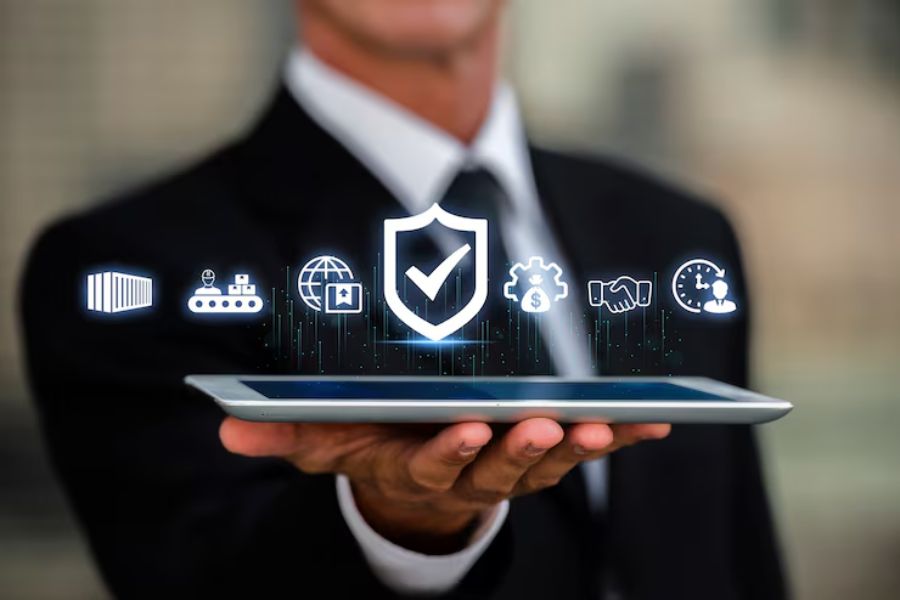Modern businesses rely on digital tools to function more efficiently. As the workplace becomes increasingly tech-enabled, there’s a growing need to ensure that the systems we use support productivity and compliance. When done well, technology can help companies stay aligned with labor laws, data protection, and internal policies. Just as importantly, it can build trust across teams and create a work environment that feels fair, clear, and secure.
Why Compliance Matters in a Digitized Workplace
Workplace compliance involves making sure employees and leadership follow legal standards and internal rules. These rules can cover areas like work hours, cybersecurity training, financial reporting, health and safety, and more. As companies adopt more remote work, shift scheduling software, project management tools, and cloud-based systems, it becomes easier for things to slip through the cracks if companies don’t monitor compliance.
When policies aren’t followed, intentionally or by mistake, it can result in legal problems, damaged reputations, and loss of employee trust. Having clear systems in place helps prevent those outcomes. As expectations grow, manual monitoring isn’t always realistic.
That’s where technology can offer real support.
How Technology Improves Compliance
Digital platforms can automatically track data that relates to policy and regulation. For example, time-tracking software can flag when an employee works more hours than allowed. Document systems can require employees to complete certain training before gaining access to specific files. Automated reminders can go out when certifications are about to expire. These are just a few ways that software helps businesses stay organized and reduce human error.
Many compliance systems also create logs. This means there’s a reliable record of who completed what training, who received what message, or when a certain policy was updated. In the event of an audit or internal review, this information is easy to access and verify.
In short, technology turns compliance from something reactive into something proactive.
Creating a Culture of Responsibility and Clarity
When employees know there are clear systems in place, expectations become easier to meet. Compliance tools send a message: the company takes rules seriously, but it also wants to help everyone meet them. This creates a culture of shared responsibility.
Systems that track compliance without bias can also reduce feelings of unfair treatment. For example, if training is required and reminders are sent equally to everyone, there’s less room for confusion or miscommunication. No one is singled out, and no one is left in the dark.
This approach helps avoid a dynamic where people feel like their employers monitor them unfairly. Instead, technology becomes a support tool, not a surveillance mechanism.
Connecting Back to the Basics of Workplace Compliance
Technology only works if there’s a strong foundation. That includes having clear policies, communicating them effectively, and following up with consistent action.
If you want to ensure compliance in the workplace, here are some essential steps:
- creating accessible policies
- offering regular training
- conducting audits
- encouraging open communication
Companies can make these efforts more effective by using the right tech tools.
For example, employers can upload policies to a centralized portal. Then, they can deliver training through learning management systems that send out reminders. Financial departments performing audits can use software that logs interactions and usage. These systems don’t replace policy or culture—they enhance it.
Small Business Use Case: Smart Systems for Smarter Oversight
Imagine a small creative agency with a mix of in-person and remote employees. They use a project management platform to assign tasks, a time tracking app to log hours, and an online tool for client billing. To ensure compliance with labor regulations, managers can use the time tracking app for alerts that notify them when someone logs more than a certain number of hours in a week.
The team is also required to take data privacy training every six months. A learning system sends out training modules, tracks completions, and sends reminders a week before the deadline. If someone misses the training, their access to certain tools is limited until they complete it.
No one needs to check spreadsheets or send emails manually. The system runs quietly in the background, helping the business stay compliant without interrupting the team’s work.
Getting Started with Tech‑Supported Compliance
If you’re considering ways to introduce or improve compliance tools, here are a few simple starting points:
- Review your current systems: See where you already track essential data, and identify areas that might be at risk of non-compliance.
- Automate where possible: Use reminders, alerts, and logging features to make policy tracking smoother and more consistent.
- Choose tools that fit your workflow: The best compliance tools are the ones that integrate naturally with the platforms your team already uses.
- Keep policies clear and updated: Technology helps, but it can’t replace good communication. Make sure employees know what you expect of them.
- Stay flexible: As regulations change, update your systems and rules accordingly. Regular reviews help keep everything current.
With the right tools in place, businesses can maintain consistent compliance and keep daily operations running smoothly.
Compliance Isn’t a Chore
Technology won’t solve every compliance issue, but it can make compliance easier, more consistent, and more transparent. When people know there are systems in place to support them, they’re more likely to trust the process.
Using digital tools to track training, monitor work hours, and send timely alerts can help businesses stay ahead of regulations. At the same time, these systems promote fairness and shared accountability. Compliance becomes less of a chore and more of a natural part of everyday operations.
The result is a workplace where expectations are clear, risks are lower, and employees feel supported, not policed.


